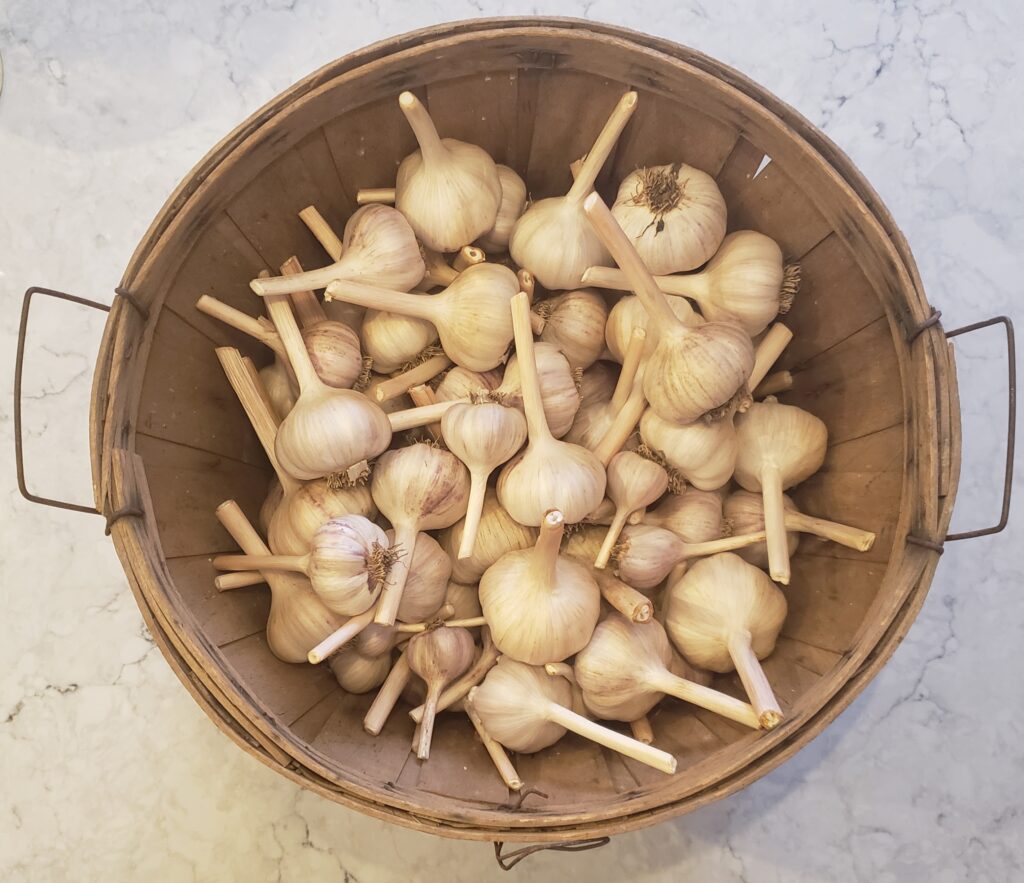What Does Green Pig Farm Grow in Their Garden?
We often get questions about what we grow in the garden, so we thought we’d share what we have planted this year, as well as how we preserve it. This list will not only include where we originally purchased the seeds (since we now seed save), but also links to other resources we thought might be helpful. We’ll start with our favorite category: legumes.
Legumes

Legumes are our number one crop because of their versatility. This group includes things like beans, peas, peanuts, and even clover. If you want to know why this is our favorite category, check out our post: The #1 Garden Item to Plant.
Here is what we are growing this year and how we will preserve the harvest:
- Blue Lake Bush Bean (pressure canned)
- King of the Garden Pole Lima Bean (dried)
- Black Turtle Bush Bean (dried)
- Haricot Tarbais Pole Bean (dried)
- Iroquois Skunk Pole Bean (dried)
- Sugar Snap Peas (frozen)
Nightshades

Nightshades are a group of fruits and veggies that contain solanine, including tomatoes, peppers, and potatoes.
- Tomatoes
- Yellow Pear (fresh eating)
- Red Cherry (fresh eating)
- Brandywine beefsteak (fresh eating, water bath canned, dehydrated)
- Roma V (water bath canned)
- San Marzano (water bath canned)
- Peppers
- Cayenne (water bath canned, dehydrated)
- Jalapeno (frozen, water bath canned, pressure canned)
- Alma Sweet Paprika (dehydrated)
- Criola de Cocina (frozen)
- California Wonder (frozen)
- Habanero (dehydrated, water bath canned)
- Tangerine Dream (fresh eating)
- Sweet Long Blend (fresh eating)
- Golden Marconi (frozen)
- Potatoes
- Yukon Gold (cold storage)
- Eggplant
- Black Beauty (frozen)
Brassicas
Brassicas are often referred to as cole crops (sometimes mistaken for “cold crops”). These plants can usually be planted when it is a bit colder, before the first frost. If planted for a fall harvest, they will tolerate a light frost, too. Some even say frost improves the flavor of these veggies.
- Charleston Wakefield Cabbage (cold storage, fermented —learn how to make sauerkraut here!)
- Red Acre Cabbage (cold storage, fermented —learn how to make sauerkraut here!)
- DeCicco Broccoli (frozen)
- Amazing Cauliflower (frozen)
- Russian Red Kale (frozen)
Grain
- Peaches and Cream Sweet Corn (frozen)
Curcubits
Curcubits include cucumbers, summer and winter squash and melons. Curcubits provide some of the best fresh eating and long term storage items, in our opinion.

- Marketmore (fresh eating)
- National Pickling (water bath canning)
- Dark Green Zucchini (frozen)
- Bennings Green Tint Scallop Pattypan Squash (fresh eating)
- Yellow Crooked Neck Squash (fresh eating)
- Green Flesh Honeydew (fresh eating)
- Hales Jumbo Cantaloupe (fresh eating)
- Kajari Melon (fresh eating)
- Strawberry Watermelon (fresh eating)
- Jack Be Little Pumpkin (cold storage)
- Big Max Pumpkin (cold storage)
- Vegetable Spaghetti Squash (cold storage)
- Waltham Butternut Squash (cold storage)
- Amish Neck Pumpkin (cold storage)
Umbellifers
This small group of items include celery, carrots and even parsley.
- Celery (frozen)
- New Kuroda Carrots (cold storage)
Alliums
Alliums include some of the best aromatics, garlic and onions. In addition to providing lots of flavor, both of these items are easily stored for later consumption.

- Hardneck Garlic (cold storage,-learn how to do it here!, dehydrated)
- Stuttgarter Onion (cold storage)
- Chives (dehydrated)
Herbs and Greens
- Dwarf Jewel Mix Nasturtium
- Purple Basil (dried)
- Sweet Basil (dried)
- Dill weed (dried)
- Rosemary (dried)
- Thyme (dried)
- Oregano (dried)
- Red Romaine Lettuce
Fruits and Berries

- Blueberries
- Everbearing Heritage and Caroline Raspberries (frozen, water bath canned)
- Honeycrisp Apples
- Gala Apple
- Cortland Apple
- Crisp and Sweet Pear
- July Elberta Peach
- Redhaven Peach
- Contender Peach
- Cherry Pie North Star Cherry
- Strawberries
Miscellaneous
- Jersey Knight Asparagus (frozen)



No comments.